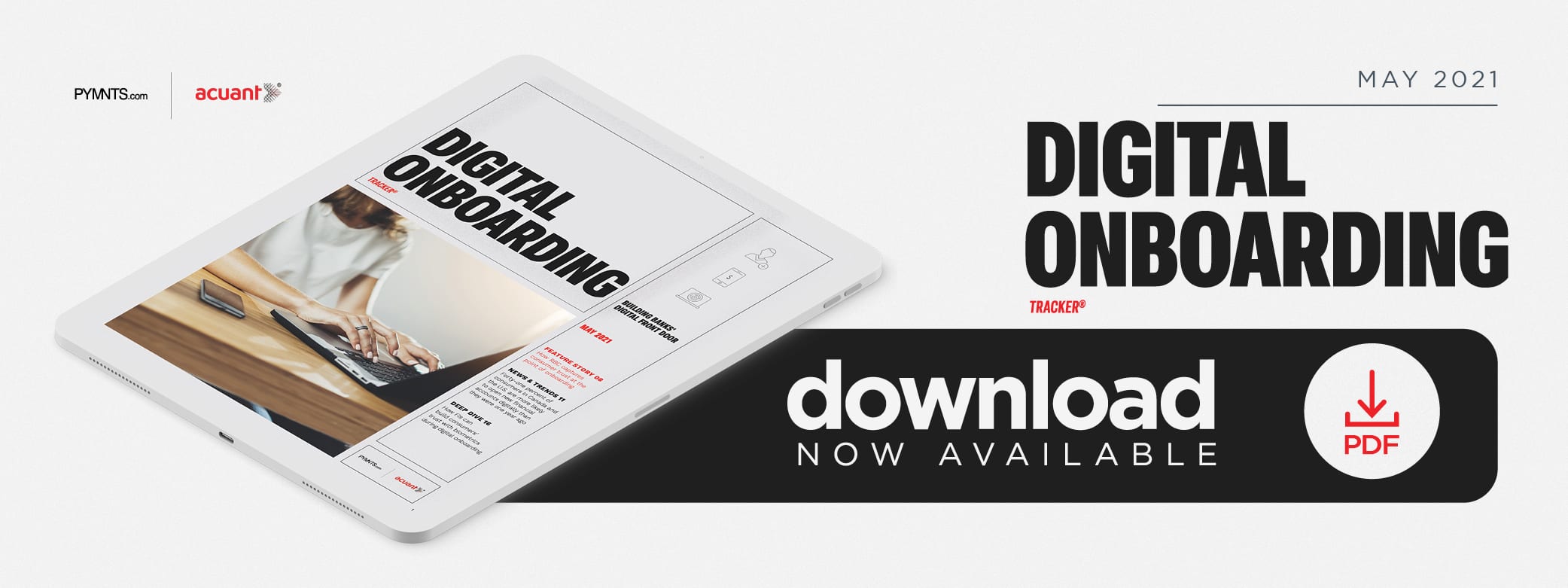Providing a swift and easy onboarding experience has become an essential component of financial institutions’ (FIs’) offerings since the pandemic’s onset sent consumers online to conduct their banking. Persuading potential customers to sign up for products in any channel begins by winning their trust, however.
This increasingly means putting the ID verification part of the onboarding process directly into the hands of consumers, Rami Thabet, vice president of digital product at Royal Bank of Canada (RBC), explained in a recent PYMNTS interview. The bank officially became the first Canadian FI to allow consumers to digitally verify their identities via government-supported ID documents, including driver’s licenses and passports, in March 2020. The solution was designed to conform with consumers’ own comfort levels when providing such personal details, offering potential customers a variety of onboarding options based on their current privacy needs. Customers can onboard completely on their own via the bank’s mobile app or website, or they may do so by connecting with bank advisers either remotely or at brick-and-mortar locations, Thabet said.
“What is interesting in Canada [is that] we had always seen consumers being incredibly focused on privacy [regarding the] data and the information that is kept about them,” he said of the service. “The corollary to that is that FIs are among the most trustworthy institutions in Canada in the eyes of the consumer … so what we wanted to do is leverage that and reinforce that.”
The ability to leverage that sense of trust will be a key differentiator for banks as more consumers go online first to find new banking products or FIs — a growing preference that is also changing their expectations for digital privacy.
Consumer Trust And Changing Digital Privacy Needs
The surge in fraud during the pandemic also appears to have increased consumers’ concerns regarding the safety of their data. Simply putting a privacy standard online for the consumer’s edification no longer cuts it for FIs in this environment, Thabet explained. FIs must convince potential customers that the organization is taking these concerns to heart. RBC’s identity verification process during onboarding is designed so that the necessary ID documents always remain in the hands of clients — no matter how they onboard, he said.
“Even when you are interacting with an adviser, when it comes time to verify your identity, … what is happening on the adviser’s desktop pushes out to the client’s mobile phone,” he said. “And then the client scans their ID and their passport, [in] their own privacy, in their own time, and [within] their own location off their own phone. At no point do we ask a client to give us their ID. It is a very important nuance — it is a very small element of the experience, but it is incredibly emotive, and we [have] reinforced to the client that your privacy is paramount, and there is nothing more private than you doing it by yourself on your own phone.”
More customers than ever are primarily interacting with their banks through online channels. This places more importance on using inherently digital technologies that can seamlessly authenticate users via these avenues, Thabet explained, including automated technologies like artificial intelligence (AI). RBC utilizes AI to help speed up consumers’ identity verification procedures on its mobile app, for example.
“We are leveraging a lot of that [technology] and the data that is available [there] to add security to the system, [not only] to ensure that ID proofing is in place but also to give clients the confidence that we have their security and privacy well managed through[out] the process and finally to create a really compelling experience where repeat data entry is not required,” he said.
Convincing potential and existing customers that banks will keep their data secure from the point of onboarding is going to carry more weight as the migration to digital-first banking accelerates. Self-serve transactions at RBC — including payments, changes of address or other such tasks consumers conduct independently — represented nearly 94 percent of transactions at the bank at the start of the fiscal year, for example. This is a shift that would have taken decades without the impetus of the global health crisis, Thabet said, but it does not mean that digital-first consumers are willing to give up all the benefits of in-person banking.
Digital Identity And The Human Element
Consumers still anticipate being able to connect with human bank associates whenever and wherever they like, including when onboarding. Thabet has observed that users flocking to digital channels during the pandemic have still sought the personalization they associate with onboarding at brick-and-mortar locations.
“What we [have seen are] clients [who] were not simply looking for us to point them at a mobile app or a website and say ‘Good luck,’ but [who] were looking for digital tools that help … transcend the physical-digital divide,” he said. “So you are still working with an adviser, you are still leaning into the great human network that FIs have, but [you are] supported by a robust digital capability.”
Determining how to bridge the divide between the levels of trust consumers place in digital and physical banking channels will likely be the key challenge for FIs in the coming years. Banks will need to keep a close watch on how consumers view digital identity and privacy to succeed in bridging this gap.

